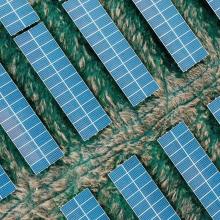Unveiling the new project pipeline to deliver Clean Power…
8 Dec 2025 - 5 minute read
Sign in to add this page to your favourites
Sign in or registerSign in or register to manage your favourites
Sign in or register
In a significant step toward streamlining the grid connection process for smaller Distributed Generation projects in England and Wales, Ofgem has approved a key modification, CMP446, to the Connection and Use of System Code (CUSC).
This change raises the threshold for requiring an Evaluation of Transmission Impact Assessment (TIA) from 1MW to 5MW, (where fault level issues aren’t present), enabling faster connections for small-scale energy projects such as community energy projects.
Since 2016, Distributed Generation projects exceeding 1MW in England and Wales have been required to undergo a TIA to assess their impact on the transmission network and determine whether network reinforcements are needed. While essential for larger projects, this process often delayed smaller initiatives with minimal impact on the grid.
By increasing the TIA threshold to 5MW, CMP446 allows many smaller projects to connect more quickly, delivering clean, renewable energy to Great Britain’s energy system.
In Scotland, a TIA is required for projects above 200kW for mainland Scotland (Scotland Islands are still 50kW), although this new threshold does not affect Scottish projects, our broader package of connection reforms will benefit projects across Great Britain, ensuring a more efficient connection process for all.
Set to take effect on 12 May 2025, this modification is part of a comprehensive set of connection reforms designed to overhaul the grid connection process and prioritise projects ready to deliver clean energy across Great Britain. These reforms aim to create a more efficient, low-carbon electricity system in 2030 and beyond.
To support the implementation of CMP446, we've collaborated closely with National Grid and other distribution network operators to evaluate the impact of raising the TIA threshold. Our analysis confirms that this change will significantly improve the connection process for smaller Distributed Generation projects, a goal shared by all stakeholders.
These changes mark a pivotal step in modernising Great Britain’s connections framework to support the transition to a cleaner and more efficient energy system. By simplifying connections for smaller projects, we’re encouraging and making local renewable energy more efficient to deliver a sustainable future for all.
“This change to the connections process is an important step in supporting future community energy and smaller scale projects to connect to our electricity distribution networks. By raising this threshold, we can unlock the connections process for over 682MW of smaller projects without sacrificing on resilience of our electricity networks.”